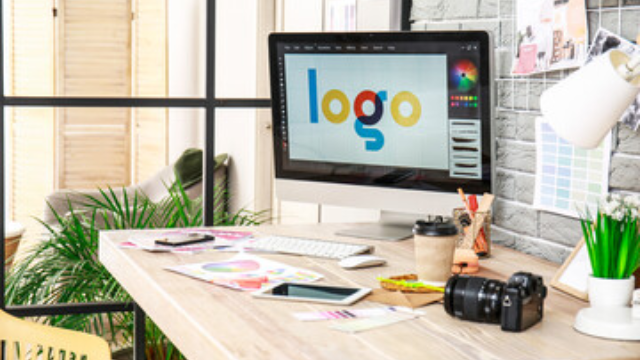So, you want to become a typography designer? Well, you’re in for an exciting journey! In this article, we’ll walk you through the essential steps to kickstart your career in typography design. From understanding the significance of typography in design to honing your skills with the latest software and tools, we’ll cover it all. Get ready to dive into the world of typography and unleash your creativity!
The Importance of Typography in Design
Understand the significance of typography in design. Typography plays a crucial role in design as it encompasses the art and technique of arranging type to make written language legible, readable, and visually appealing. It goes beyond just choosing fonts and arranging text; typography has a profound impact on user experience and the overall psychology of design.
The psychology of typography involves understanding how different fonts, sizes, and styles evoke specific emotions and convey messages. For example, bold and heavy fonts can create a sense of strength and importance, while delicate and elegant scripts can evoke a feeling of elegance and sophistication. By carefully selecting and pairing fonts, designers can enhance the mood and tone of a design, making it more engaging and memorable.
Typography also has a significant impact on user experience. The way text is presented can affect how users perceive and interact with a design or website. Well-designed typography can improve readability, guiding users through the content and making it easier to navigate. On the other hand, poorly chosen fonts or cluttered layouts can hinder readability and frustrate users, leading to a negative user experience.
Developing a Strong Foundation in Typography
To develop a strong foundation in typography, you need to understand essential typographic principles. This includes learning about hierarchy, alignment, spacing, and legibility. Additionally, mastering the art of typeface selection is crucial, as different fonts evoke different emotions and convey different messages. By honing these skills, you will be able to create visually appealing and effective typographic designs.
Essential Typographic Principles
Developing a strong foundation in typography begins with mastering essential typographic principles. Two key principles that every typography designer must understand are typographic hierarchy and effective spacing. Typographic hierarchy refers to the arrangement of different elements in a design to create visual hierarchy and guide the reader’s eye. This can be achieved through variations in font size, weight, and style. By establishing a clear hierarchy, you can effectively communicate the most important information and guide the reader through the content. Effective spacing, on the other hand, involves creating appropriate distances between letters, words, and lines of text. Proper spacing enhances readability and improves the overall aesthetic of the design. It is important to strike a balance between legibility and visual appeal when working with spacing. Mastering these essential typographic principles will lay a strong foundation for your typography design skills.
Mastering Typeface Selection
As a typography designer, you need to have a solid understanding of selecting the right typeface to develop a strong foundation in typography. Typeface selection plays a crucial role in creating visually pleasing and effective designs. Here are three key aspects to consider when choosing typefaces:
- Typeface Pairing: Experiment with different combinations of typefaces to create contrast and harmony. Pairing a serif typeface with a sans-serif typeface can create an interesting visual dynamic.
- Typographic Hierarchy: Use different typefaces to establish a clear hierarchy in your design. Choose a bold, attention-grabbing typeface for headlines, and a more subtle typeface for body text.
- Consistency: Maintain consistency in typeface selection throughout your design to create a cohesive and professional look.
Exploring Different Typography Styles and Trends
Explore various typography styles and trends by immersing yourself in the world of typography design. To stay inspired and keep up with the latest trends, it is important to explore different styles and learn from historical typography designs. By studying the past, you can gain insight into the evolution of typography and discover timeless design principles that can be applied to your own work.
Here is a table showcasing some popular typography styles and trends:
| Style | Description |
|---|---|
| Serif | Classic and elegant, with small decorative lines. |
| Sans-serif | Modern and clean, without the decorative lines. |
| Script | Elegant and flowing, resembling handwriting. |
| Display | Bold and attention-grabbing, used for headlines. |
Take the time to experiment with different typography styles and see how they can enhance your designs. Look for inspiration from various sources such as books, magazines, websites, and even everyday objects. You can also attend design conferences or workshops to learn from industry experts and stay updated on the latest trends.
Mastering Typography Software and Tools
To become a typography designer, you need to familiarize yourself with and master various typography software and tools. This will allow you to create stunning and visually appealing typography designs. Here are some of the essential software and tools you should consider mastering:
- Adobe Creative Cloud: Adobe offers a range of powerful software like Photoshop, Illustrator, and InDesign, which are widely used in the design industry. These tools allow you to manipulate and create typography with precision and ease.
- Font Management Software: Font management software like Suitcase Fusion or FontExplorer X Pro helps you organize and manage your growing collection of fonts. It allows you to quickly search, activate, and deactivate fonts, ensuring that you have the right typeface for each project.
- Typography Plugins: Plugins like Fontself or Typecast can enhance your workflow by providing additional features and functionality. These plugins allow you to create custom fonts, experiment with advanced typography techniques, and preview your designs in real-time.
Building a Portfolio of Typography Design Work
To build a strong portfolio of typography design work, you need to showcase your versatility as a designer. This means demonstrating your ability to work across different styles, genres, and mediums. Additionally, it’s important to highlight any collaborations you’ve had with clients, as this shows your ability to effectively communicate and meet their specific design needs. Finally, don’t forget to emphasize your technical proficiency in typography software and tools, as this will give potential employers or clients confidence in your ability to execute your design vision.
Showcasing Design Versatility
Build a diverse portfolio of typography design work to showcase your design versatility. Your portfolio should demonstrate your ability to experiment with different design styles and techniques, as well as your creative problem-solving skills. Here are some ways to showcase your design versatility in your typography portfolio:
- Include a variety of projects that showcase different typographic styles, such as modern, vintage, hand-lettered, or experimental.
- Demonstrate your ability to adapt typography to different mediums, such as print, digital, or motion design.
- Show examples of how you have creatively solved design problems through typography, such as using typography to enhance readability, convey a specific mood, or communicate a message in a unique way.
Incorporating Client Collaborations
To incorporate client collaborations and build a portfolio of typography design work, you should actively seek out opportunities to work with clients on real-world projects. This not only allows you to showcase your skills but also provides valuable experience in working with clients and understanding their needs. When collaborating with clients, it is important to have effective communication to ensure that you are meeting their expectations. Actively listen to their feedback and incorporate it into your designs. Make sure to ask clarifying questions to gain a clear understanding of their vision. By incorporating client feedback and effectively communicating throughout the design process, you can create designs that not only meet their requirements but also exceed their expectations. These client collaborations will serve as valuable additions to your portfolio, showcasing your ability to work with clients and produce high-quality typography designs.
Highlighting Technical Proficiency
You can showcase your technical proficiency in typography design by building a portfolio of your work. This will not only demonstrate your design proficiency but also provide potential clients or employers with tangible evidence of your skills. Here are three ways to highlight your technical skills and design proficiency in your portfolio:
- Include a variety of typography projects that showcase your ability to work with different fonts, layouts, and styles.
- Demonstrate your understanding of typographic principles by showcasing projects that effectively use hierarchy, spacing, and alignment.
- Highlight your technical skills by including projects that showcase your ability to use design software and tools, such as Adobe Illustrator or InDesign.
Networking and Collaborating in the Typography Design Community
Connect with other typography designers and professionals in the industry to enhance your skills and gain valuable insights into the typography design community. Networking opportunities are crucial for expanding your knowledge and staying up-to-date with industry trends. By attending design conferences, workshops, and meetups, you can connect with like-minded individuals, share ideas, and establish meaningful relationships. Collaborating on projects with other designers is also a great way to learn new techniques and approaches. Engaging in collaborative projects allows you to explore different perspectives, challenge your creative boundaries, and develop your problem-solving skills. You can join online communities and forums dedicated to typography design, such as social media groups or design platforms, to connect with professionals from around the world. These platforms provide a space for sharing your work, seeking feedback, and discovering new opportunities. Additionally, participating in design competitions or submitting your work to design publications can help you gain recognition and connect with influential figures in the industry. By actively networking and collaborating with other typography designers, you can expand your horizons, gain valuable insights, and grow as a designer.
Continuing Education and Growth as a Typography Designer
Expanding your knowledge and skills is essential for the continued growth and development of a typography designer. As the field of typography evolves, it is crucial to stay up-to-date with the latest trends and techniques through continuing education and professional development. Here are three ways you can continue to enhance your skills as a typography designer:
- Attend workshops and conferences: Participating in workshops and conferences allows you to learn from industry experts and gain insights into the latest advancements in typography. These events provide opportunities to network with other designers and stay connected to the design community.
- Take online courses: Online courses offer flexibility and convenience, allowing you to learn at your own pace. Platforms like Skillshare and Udemy offer a wide range of typography courses that cater to different skill levels and interests. Taking these courses can help you refine your skills and learn new techniques.
- Engage in self-study: Explore typography books, blogs, and online resources to deepen your understanding of the subject. Experiment with different typographic styles, analyze successful designs, and stay curious about the ever-evolving world of typography.



